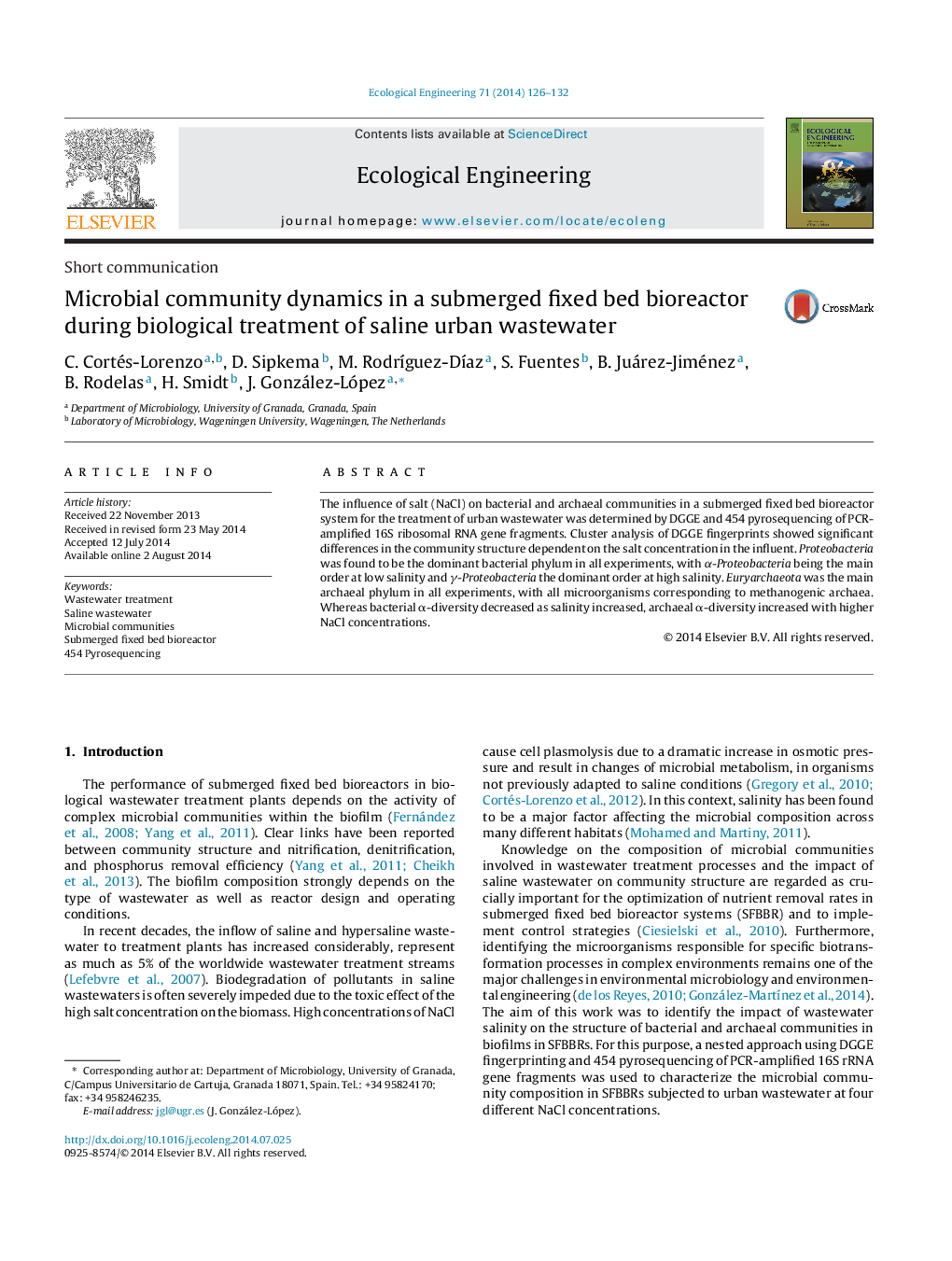| Article ID | Journal | Published Year | Pages | File Type |
|---|---|---|---|---|
| 4389147 | Ecological Engineering | 2014 | 7 Pages |
•A submerged filter bioreactor was used to treat wastewater of different salinities.•Bacterial and archaeal communities were studied by DGGE and 454 pyrosequencing.•α-Proteobacteria was the main order at low salinity.•γ-Proteobacteria was the dominant order at high salinity.•Archaea increased proportionally to the wastewater salinity.
The influence of salt (NaCl) on bacterial and archaeal communities in a submerged fixed bed bioreactor system for the treatment of urban wastewater was determined by DGGE and 454 pyrosequencing of PCR-amplified 16S ribosomal RNA gene fragments. Cluster analysis of DGGE fingerprints showed significant differences in the community structure dependent on the salt concentration in the influent. Proteobacteria was found to be the dominant bacterial phylum in all experiments, with α-Proteobacteria being the main order at low salinity and γ-Proteobacteria the dominant order at high salinity. Euryarchaeota was the main archaeal phylum in all experiments, with all microorganisms corresponding to methanogenic archaea. Whereas bacterial α-diversity decreased as salinity increased, archaeal α-diversity increased with higher NaCl concentrations.
